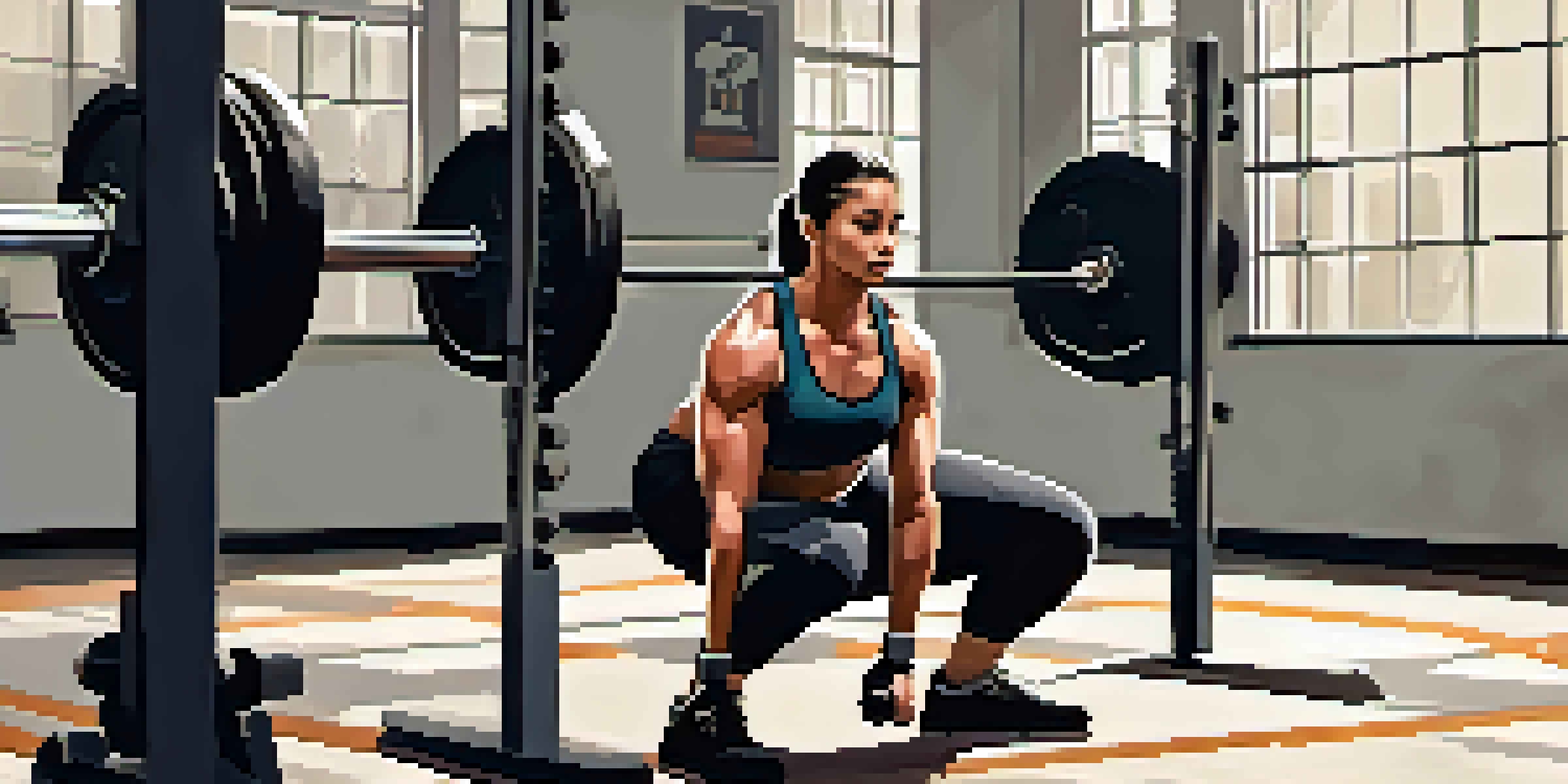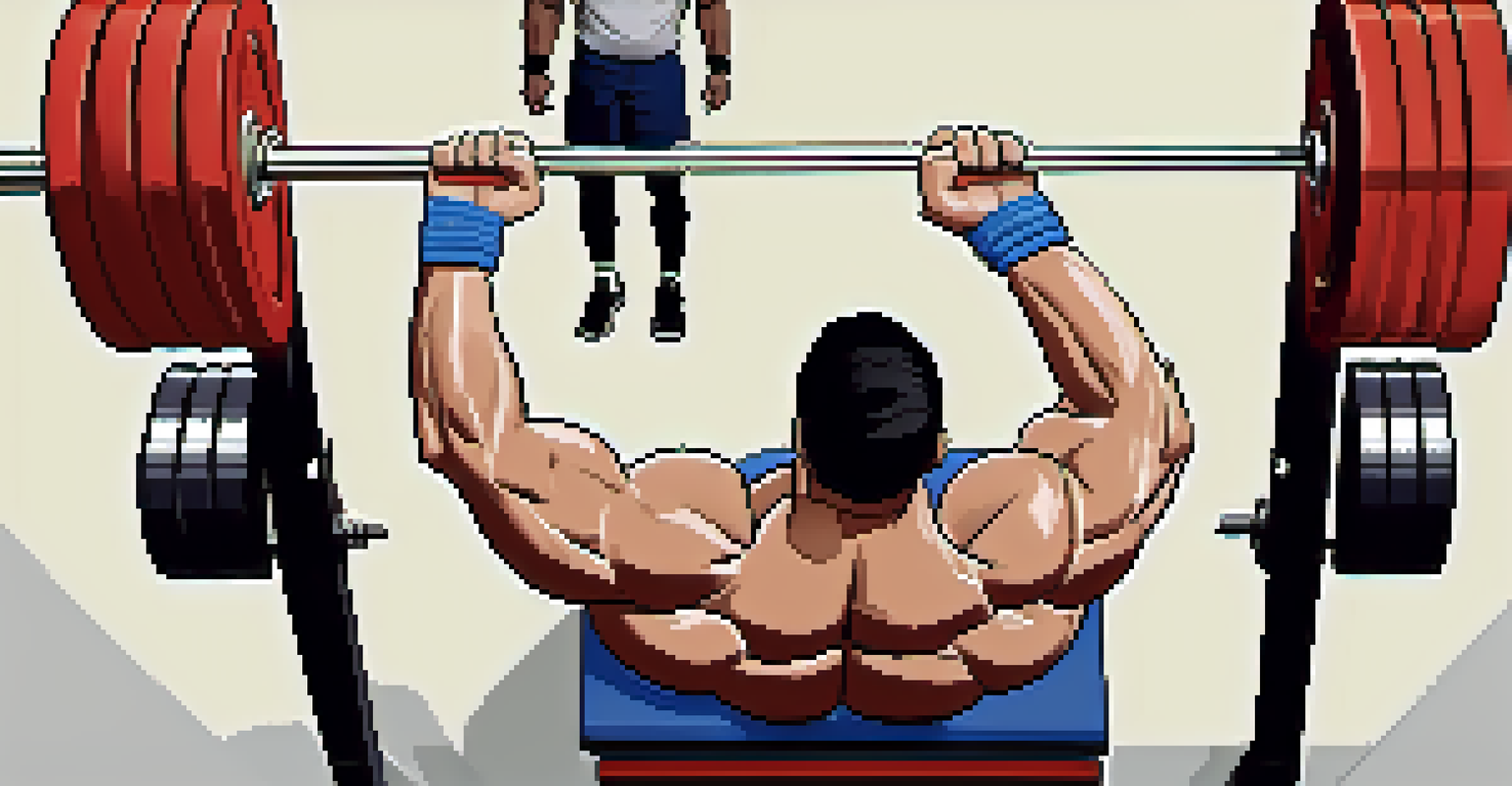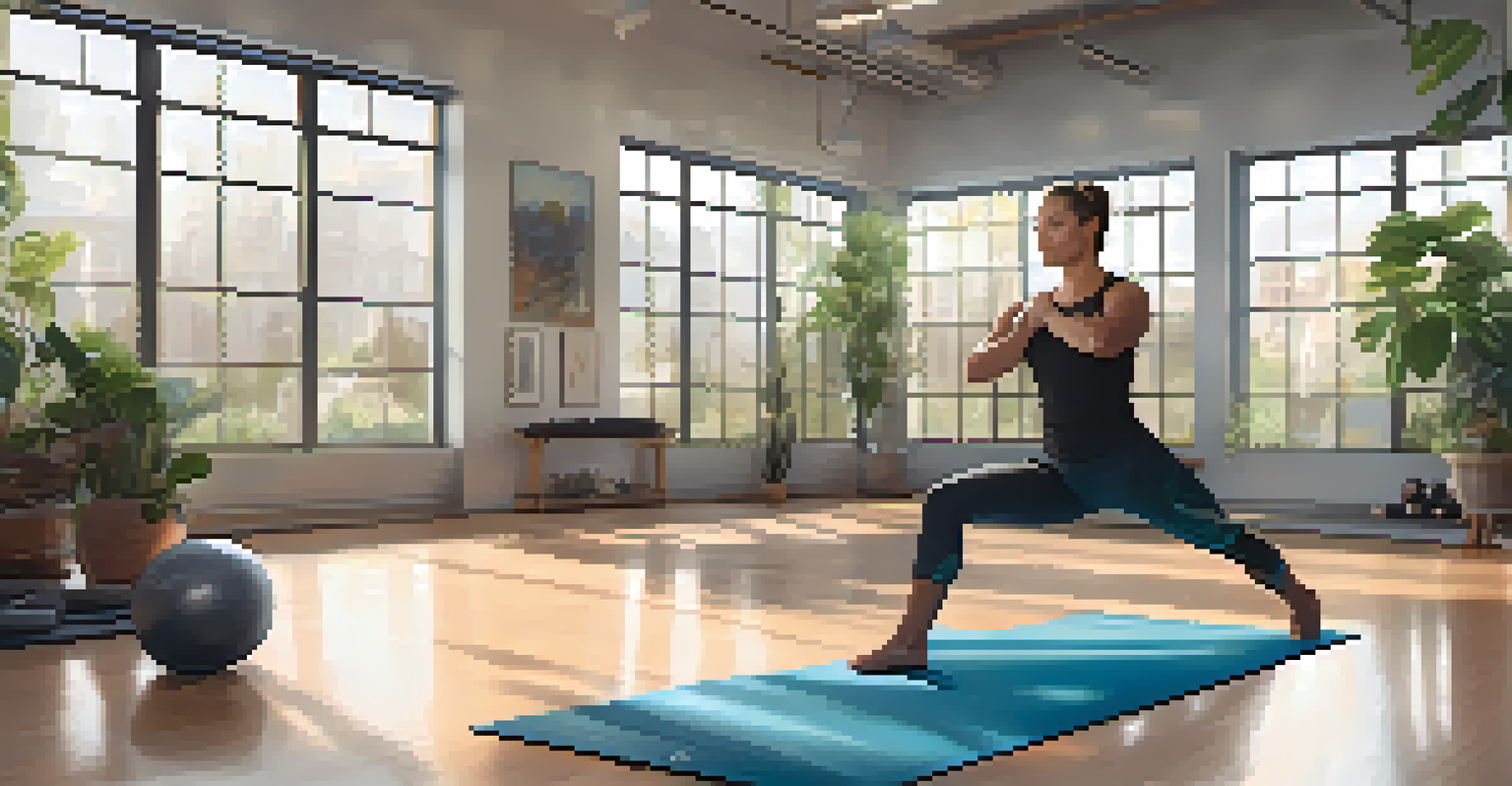Proper Posture for Optimal Powerlifting Performance

Understanding the Importance of Posture in Powerlifting
Posture is often the unsung hero of powerlifting performance. It serves as the foundation for every lift, affecting your strength and stability. Without proper posture, you might not only struggle with lifts but also risk injury, which could sideline your training.
Posture is the key to strength, and the foundation of every lift.
Good posture ensures that your body is aligned correctly, allowing for optimal force generation during each lift. Think of it like building a house; if the foundation is weak, the structure will crumble. In powerlifting, your body is that structure, and posture is the foundation.
Moreover, maintaining proper posture helps you to engage the right muscle groups effectively. When your body is positioned correctly, you can maximize your strength while minimizing unnecessary strain, leading to better lifts and faster progress.
Elements of Proper Posture for Lifts
Proper posture encompasses several key elements, including spine alignment, foot positioning, and core stability. Each lift, whether it's a squat, bench press, or deadlift, requires specific postural adjustments to ensure safety and efficiency. For example, during a squat, your feet should be shoulder-width apart, and your spine should remain neutral.

Core stability is another crucial element; engaging your core muscles stabilizes your spine, helping to prevent injury. Picture your core as a natural weight belt, providing support during heavy lifts. If your core isn’t engaged, you might find yourself wobbling or losing balance, which can impact your lift.
Posture is Key for Powerlifting
Proper posture serves as the foundation for strength and stability, preventing injury and enhancing performance.
In addition to spine alignment and core stability, your shoulder position plays a vital role. Keeping your shoulders retracted and down helps maintain an open chest and aids in lifting heavier weights. This alignment allows for better bar path and power transfer, especially during the bench press.
The Role of Core Strength in Posture
Your core is more than just your abs; it’s a complex network of muscles that support your spine and pelvis. A strong core is essential for maintaining proper posture in powerlifting. Think of it as the anchor of a ship; without it, the ship can sway and lose direction.
Good posture is not just about looking good; it's about feeling good and performing at your best.
When your core is weak, you’re likely to see a breakdown in your posture during lifts, leading to compromised performance and increased injury risk. Exercises like planks, dead bugs, and anti-rotation movements can significantly improve your core strength, allowing you to maintain better posture.
Moreover, a strong core helps in managing intra-abdominal pressure, which is crucial for stabilizing your spine during heavy lifts. By breathing deeply and bracing your core properly, you create a solid base, making each lift more efficient and powerful.
Practical Tips for Maintaining Proper Posture
To maintain proper posture, start by practicing good habits outside the gym. Being mindful of your posture while sitting, standing, or walking can carry over into your lifting routine. For instance, when sitting at a desk, keep your back straight and shoulders relaxed to build muscle memory.
In the gym, utilizing mirrors or video recordings can help you self-assess your form. Watching your lifts can reveal any postural flaws, allowing you to make real-time adjustments. This feedback loop is invaluable for continuous improvement and developing good habits.
Core Strength Supports Posture
A strong core stabilizes your spine, allowing for better posture and efficiency during lifts.
Additionally, consider working with a coach or experienced lifter who can provide personalized feedback. Having an extra set of eyes can help identify subtle posture issues you might overlook, ensuring you stay on track for optimal performance.
Incorporating Mobility Work for Better Posture
Mobility work is crucial for achieving and maintaining proper posture in powerlifting. Tight muscles can hinder your ability to assume the correct positions for lifts, leading to poor posture and compromised performance. Incorporating dynamic stretches and mobility drills into your warm-up routine can improve your range of motion.
For example, hip openers and thoracic spine mobility exercises can enhance your squat depth and bench press position. These movements help loosen tight areas and promote better alignment, allowing you to lift more effectively. Think of mobility work as oiling the hinges on a door; it allows for smoother movement.
Moreover, consistent mobility training can aid in recovery and reduce the risk of injury. By keeping your muscles flexible and joints healthy, you can maintain better posture not just in the gym, but in everyday life, contributing to overall well-being.
Recognizing Signs of Poor Posture During Lifts
Being aware of the signs of poor posture is essential for every powerlifter. Common indicators include back rounding, excessive forward lean, or shoulder shrugging during lifts. These postural issues can not only hinder performance but also increase the risk of injury.
Listening to your body is key; if you feel discomfort or instability during a lift, it may be a sign that your posture needs adjustment. Don't ignore these signals! They’re your body’s way of communicating that something isn’t right, and addressing these concerns can lead to better lifts.
Mobility Work Enhances Performance
Incorporating mobility exercises helps improve range of motion and posture, leading to more effective lifts.
Additionally, it’s helpful to set up a checklist for your form before each lift. Focus on key points, such as keeping your spine neutral and your core engaged. This mental cue can help you stay conscious of your posture, leading to consistent improvements over time.
The Long-Term Benefits of Maintaining Good Posture
Maintaining proper posture in powerlifting is not just about improving your lifts; it has long-term benefits that can enhance your overall fitness journey. Good posture contributes to better biomechanics, leading to more efficient movements and reduced injury risk. This efficiency allows for greater progress in your training.
Moreover, good posture can positively impact your mental state. When you stand tall and lift with confidence, you may notice an increase in self-esteem and motivation. It’s like walking into a room with your head held high; it changes how you feel about yourself.

In the grand scheme of your fitness journey, adopting and maintaining good posture can lead to a more sustainable practice. With fewer injuries and improved performance, you can enjoy powerlifting for years to come, continually challenging yourself and reaching new heights.